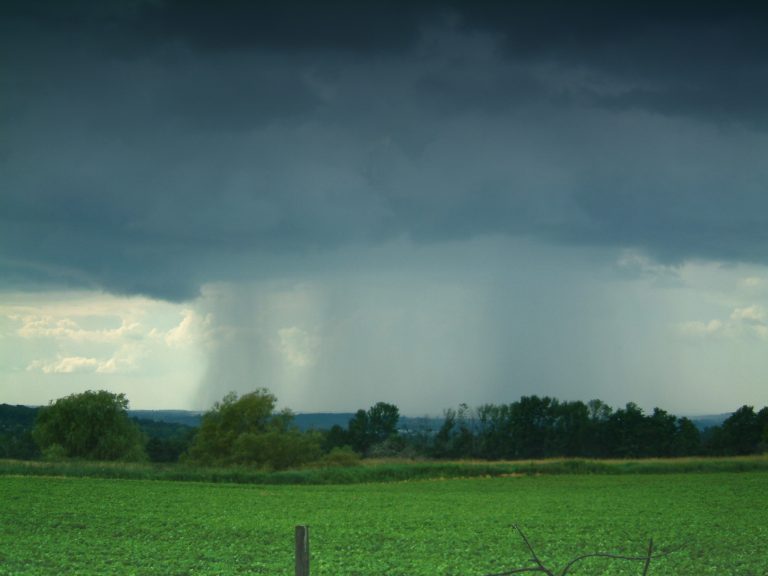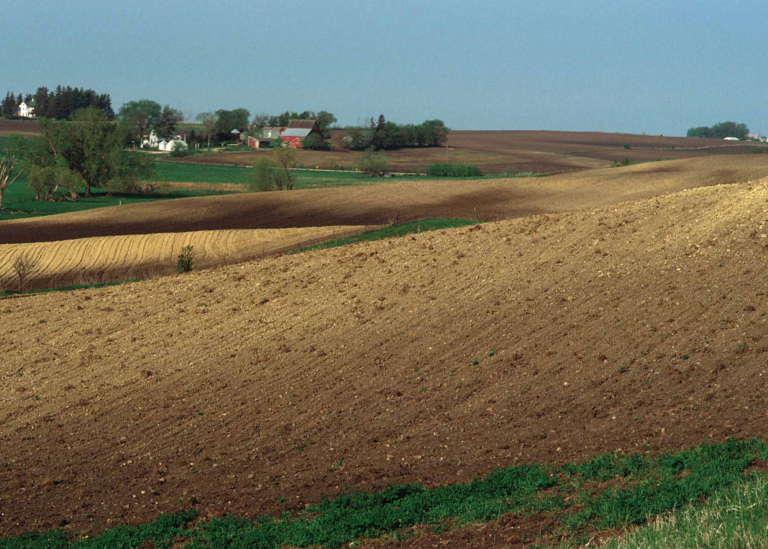IARN — While wet weather and cool temperatures delayed planting this spring, the corn crop looks “pretty good,” according to LG Seeds agronomists covering various regions across the Midwest. But those same agronomists expressed concern about heat, dryness and disease pressures like tar spot.
“Growers have a lot invested in this year’s crop, so they need to do everything they can to protect yield,” says Alex Cox, who covers eastern Kansas and western Missouri.
Wet spring means crops are behind in many areas
Due to an extremely wet May, Cox says there was a lot of late-planted corn in his territory, including some acres that weren’t seeded until mid-June. “Some of the early planted corn initially showed a lot of wet and drown out spots, but now it’s mostly come out of that,” Cox says. He adds rain in early July also aided the crop after June heat.
Phil Brunner, who covers northern Indiana and western Ohio, reports some corn was planted on well-drained fields the last week of April, but May turned cold and wet. “The majority of the crop finally went in the ground toward the end of May and beginning of June. Some had to replant three or four times.”
Consequently, Brunner reports crop conditions are all over the board and the crop is “a bit behind, with tassels starting to emerge in mid-July.” Brunner details that “a lot of the corn looks pretty good, but the areas that got hit with all the rain early on are ragged.”
The cold, wet spring created the perfect environment for the fungal-like organism known as Pythium, a primary cause of seedling blight in much of the Corn Belt. “The new Vayantis® seed treatment that protects against Pythium seems to be living up to its reputation,” Brunner says, adding that “the protection is evident in stand counts.”
Shane Irlbeck, who covers southern Minnesota, reports planting occurred “a bit later than normal, with most farmers getting their corn planted by mid-May.” Growing degree units (GDUs) have accumulated quickly, and he says, “we’re now just a few days behind where we were last season on development.” As of mid-July, he reports most of the corn crop in his area is in the V10 to V12 stage, with tasseling just around the corner.
Heat and dryness are concerns as crop nears pollination
“Typically, the later you get in July, the hotter it can be and that can make pollination a bit harder,” Irlbeck says, noting the forecast for that time frame includes high temperatures. But he adds decent soil moisture should help the corn crop through this important stage, especially if it gets another shot of rain near-term.
Cox is also concerned about heat, though good soil moisture has thus far helped the crop endure the high temperatures. He says June was abnormally warm for Missouri and Kansas, and the latter half of July is expected to feature 90-plus degree temperatures.
Moving forward, he urges farmers considering a fungicide at tassel to look into their selection. He explains, “Some fungicides have strobilurin, which is a plant health mode of action that can help reduce environmental stress on corn. That may help mitigate some heat stress and protect your crop.”
Cox continues, “LG Seeds scores each hybrid on its potential for a positive response to fungicide. If you’re not sure how well your hybrid will respond, ask your local LG Seeds agronomist.”
Dryness is a concern in Brunner’s areas of Indiana and Ohio. “We didn’t get a drop of rain the last half of June and the beginning of July,” he says. The dry spell following a saturated spring helped the corn roots to dig deeper into the soil, which he says helped the crop withstand heavy rain and high winds in early July.
“We still need more rain,” Brunner says. He’s also concerned about heat advisories heading into tasseling. “Corn doesn’t like 90-degree temperatures and drought stress during pollination.”
Scout, scout, scout
Early disease, insect and weed pressure are limited at this point, according to the three LG Seeds agronomists, with the warmer soils and dryness in some regions helping to ward off early season pressure. But agronomists and farmers alike are concerned about the potential for later-season diseases like tar spot, gray leaf spot and southern corn rust to emerge.
“All this late-planted corn is going to see a lot of dewy August mornings and evenings where there’s going to be extended periods of leaf wetness,” Cox says. “I’m urging growers with late-planted corn to do a fungicide pass and to stay in front of diseases like gray leaf spot and southern corn rust. Once we’ve seen the disease, we probably are already losing yield.”
“Get out and scout,” Cox advises, urging Missouri farmers to be on the lookout for tar spot and to communicate with other producers to keep tabs on its spread.
Farmers in southern Minnesota are also anxious about tar spot. Southeastern areas of the state have encountered the disease, and Irlbeck believes “it’s just a matter of time until the rest of the area sees it.” He says those fighting tar spot should plan on a fungicide pass to keep the plant healthy as long as possible. In terms of application timing, Irlbeck says, “Sometimes you can get a bit more out of the fungicide to help with grain fill if you wait a bit longer to apply it.” Always adhere to label instructions.
As corn tasseling nears, Irlbeck also says farmers should scout for root feeding and use traps to monitor corn rootworm beetles, especially in or near fields that have been corn on corn. Early indications signal it could be a significant year for corn rootworm damage.
Indiana growers are all too familiar with tar spot, according to Brunner, who says it has been farmers’ top concern for two years. When farmers ask whether it’s coming, he says, “It all depends on the environment. We know we have the host. We know we have the spores that cause the disease. If dry conditions give way to humidity, it’ll take off in a hurry.”
Brunner also warns near-tasseling corn that was laid down by the powerful July 5 storm and derecho winds that tore through the Upper Midwest and northern areas of the eastern Corn Belt could be especially vulnerable to disease.
LG Seeds agronomists encourage farmers to scout fields and be proactive to prevent diseases. They stand ready to help you protect your corn crop.
Story courtesy of the Iowa Agribusiness Radio Network.
Photo courtesy of LG Seeds













